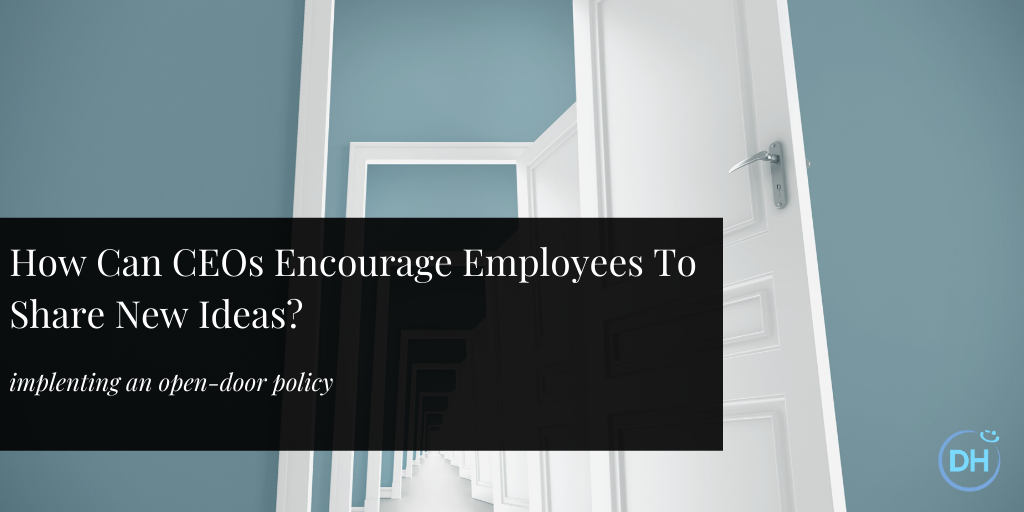
Don't take effective communication for granted. Senior managers need policies that encourage the free flow of ideas. This article will discuss how to establish an open-door policy that will benefit both management and employees.
Before we discuss how to implement an effective open door, let’s get our definitions in order.
An open-door communication policy simply means that employees can freely talk and approach people in management roles to ask questions and voice concerns. Employees should also be able to take their issues straight to senior leaders, including the CEO, outside of the regular organizational structure.
If implemented poorly, an open-door policy can create problems in the workplace. If properly implemented, though, it can generate a host of benefits. Let’s explore both the benefits and challenges of an open door policy at work.
QuestionPro listed an accessible work environment as one of eight key employee retention strategies detailed below. An open-door policy at work also increases morale among employees. It fosters a culture of openness and transparency, creating an environment where everyone feels free to raise concerns and have their voice heard.
Open communication of this nature is also beneficial to the C-suite and management. If they are confident that employees will come to them with any issues, they can respond promptly to problems and put out small fires before they turn into disaster situations.
Smart CEOs and company leaders understand that everyone, even the newest entry-level employee, has something valuable to contribute. By opening your doors to your teams and your ears to new ideas, you can translate what you learn into company policies that will benefit the entire organization.
An open-door policy needs to be implemented responsibly. For example, if a person wants to bring an issue with their manager, they could use a scheduling app to check availability and arrange a mutually convenient time.
Where problems arise is when employees get so used to bringing their issues to senior management that they fall out of the habit of independently dealing with problems. When this happens, senior managers can end up with an increased and unrealistic workload, which causes deadlines to be missed or tasks overlooked.
Other adverse outcomes can include conflicting messages from senior management and the appearance of favoritism if a manager is more available to some employees more than others. In both cases, this can lead to feelings of frustration and be a cause of inefficiency.
I have seen the benefits of an open-door policy at work. The key is to put in place guidelines to understand how it should work from the CEO down. An understanding of availability underpins the principles for an effective policy.
For example, the CEOs could clarify that they are only available to employees on certain days or even certain times of the day. Depending on the size of the company, appointments should also be booked unless it is an emergency. I worked with one CEO who operated on a simple policy: if their door was open, employees could freely enter to talk. If the door was closed, it was to be interpreted as “do not disturb.”
Additionally, an open-door policy at work should apply only to genuine work-related concerns. The idea behind an open-door policy is to resolve small problems before they become big problems and to encourage employees to share new ideas.
Finally, you must understand that an open-door policy by itself will not automatically result in the free exchange of ideas. You need to foster a policy of openness. Creating this type of work environment could involve arranging a weekly meeting where you actively look to gain insights from people in different positions within the company. This is especially important for large organizations.
Examples of policies that foster openness:
Initiatives such as these form the building blocks for the exchange of ideas. An open-door policy builds on this by showing staff that senior managers are available and accessible to discuss important issues.
Strong communication is vital in the workplace. Companies must allow the free exchange of information and ideas between the C-suite, management, and employees to get the best results. A working environment that fosters exchanging ideas will show employees that their opinions matter, boost morale, and grow productivity. Senior leaders, up to and including the CEO, will also learn more about their employees’ legitimate concerns. A working environment where people exchange ideas quickly will help prevent small problems from becoming big ones.
An open-door policy at work, however, should not be without restrictions. The senior management team must set boundaries and a framework of rules and guidelines for the policy. If you implement an excellent open-door policy at work, you can ensure effective communication at all levels, creating a happier and more efficient workplace for everyone.
2020 has changed the future of work and workplace culture is at the forefront of these changes. The challenges of this year have taught us to value people; the people in our organizations, the people in our communities and the people in our lives. When you begin to put valuing people into action you can create a happier, more meaningful workplace and world.

Owen Jones is the Senior Content Marketer at Zoomshift, an online schedule maker app. He is an experienced SaaS marketer, specializing in content marketing, CRO, and FB advertising.